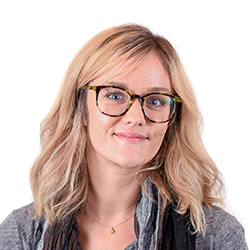By Alexandra Hennessa
Our flawed vaccine rollout should get us thinking seriously about fixing our disjointed health care system.
On January 2, 2021, I won the lottery.
No, not the Power Ball or Mega Millions. The COVID-19 vaccine lottery.
An ordinary trip to my local Safeway ended with me and my partner receiving our first doses of the Moderna vaccine. The Safeway clinic had extra doses that were going to expire before the end of the day. Those doses were up for grabs to anyone who wanted them, even a 30-year-old shopper like me.
While we were ecstatic about the opportunity to receive our shots, I also felt guilty. Poor coordination within our health care system meant that the vaccines we were receiving didn’t make it to those who needed them the most.
Vaccinations across the country initially lagged behind expectations, but have ramped up in recent weeks. According to the CDC, more than 43 million people have received their first vaccine dose, and over 18 million have received both doses, as of February 22, 2021. At this rate, we are well on track to surpass President Biden’s goal of vaccinating 100 million Americans during his first 100 days in office.
Concerns about vaccine supplies are beginning to subside, but concerns about the delivery of vaccines have escalated. That delivery has proven to be difficult due to our decentralized health care system.
The lack of a centralized health care system has led to poor coordination between providers and government agencies, and confusion among consumers. States and localities all have their own vaccine distribution plans, types of vaccination sites, and priorities for populations that will be served first. With vaccine information changing constantly, it can be difficult to know who is eligible for a vaccine and where to get one.
While long-term care settings are at the top of the list for vaccine distribution across the country, older adults living in the community have had a much harder time accessing a vaccine. Getting a vaccine appointment has been especially difficult for those who are isolated or living in communities with few resources.
A Kaiser Family Foundation analysis found that the vast majority of older adults still have not received a first vaccine dose. Here in Washington, DC, only 22% of adults over the age of 65 have received at least one dose of the vaccine. And, yet, as news of “extra” doses spreads like wildfire across the District of Columbia, dozens of individuals, most of them young, have been lining up at Safeway stores and other retail outlets early in the day hoping to get an extra vaccine dose. This practice has become so prevalent that stores have had to begin posting signs asking people not to line up.
Having a decentralized health care system also means that when problems arise, it can be difficult to determine who to contact for help, let alone to get someone on the phone. Several states have been using online scheduling systems, which may be difficult to navigate for older adults who are less tech-savvy.
In Baltimore, frustration over the inability of older adults to schedule vaccines led community leaders to set up an unofficial vaccine resource line. The hotline, staffed by volunteers, aims to complement the state’s official phone line by talking people through the process of signing up for the vaccine.
Even I faced my own issues while trying to schedule my second vaccine online. After several failed calls to government agencies, it was a call to my representative on the Council of the District of Columbia that ultimately helped me secure my second dose.
We all know we are living in unprecedented times. Growing pains are to be expected while trying to vaccinate an entire nation as quickly as possible. But maybe this pain point will get us to begin thinking seriously about how we can fix our disjointed health care system.

Alexandra Hennessa is a research associate in the Washington, DC office of the LeadingAge LTSS Center @UMass Boston. She supports the LTSS Center research team in conducting collaborative and comprehensive LeadingAge member surveys.
Hennessa earned a master’s degree in social work, with a concentration in social change, from George Mason University (GMU) in 2018. She holds a bachelor’s degree in social work from GMU.
